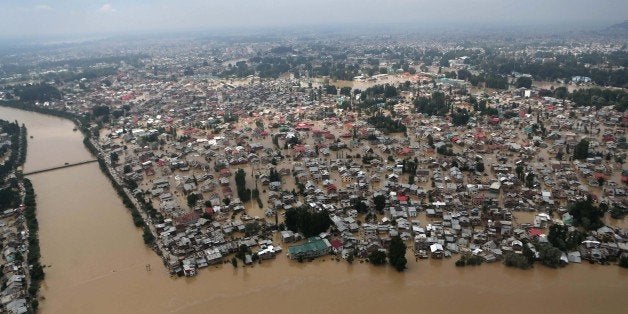
By Alisa Tang
BANGKOK, Feb 16 (Thomson Reuters Foundation) - Governments must persuade businesses to invest in protecting cities from natural disasters, and climate and development experts should heed the needs of poor communities hardest hit by climate catastrophes, experts said.
Some 80 percent of global wealth is generated in cities, so the private sector has an interest in protecting those assets, according to Peter King, who works for a USAID project that helps Asia-Pacific countries polish climate adaptation projects and access funding.
"Cities can actually make the case, 'We want to make our cities resilient to protect your assets, and you can pay for it,'" King, adaptation project preparation and finance team leader for USAID Adapt Asia-Pacific, told a forum on urban resilience.
"I think the challenge is then for the cities to make the private sector realize that (spending to protect) these public goods, in terms of climate resilience, is good for them in terms of protecting their own assets."
King spoke on a panel about financing urban resilience, at a three-day Resilient Cities Asia Pacific conference last week. It brought together city officials, development experts and researchers from 100 cities in 30 countries in Asia, North America and Europe.
Asian cities are often located in disaster-prone coastal areas, river deltas and floodplains.
The Asia-Pacific region is the one most affected by disasters. It had 714,000 deaths from natural disasters between 2004 and 2013, more than treble the previous decade, and economic losses topping $560 billion, according to the United Nations.
King of USAID described catastrophe bonds, pension funds and trillions of dollars of assets under management, adding that doing more "financial engineering or financial manipulation" could make existing funds available to cities, and make the case for the generation of additional funding.
In order to help cities focus on and invest in climate adaptation and resilience, the Rockefeller Foundation's 100 Resilient Cities project is creating a new job, the chief resilience officer, in city governments around the world.
However, researcher David Dodman said the climate adaptation sector was making the same mistake development agencies had made by not homing in on the needs of poor communities.
The sector was slow to recognize the particular needs of low-income urban residents and was using "woefully inadequate" definitions of poverty to identify "the scale and extent of poverty and need," said Dodman, of the International Institute for Environment and Development.
He pressed for decentralized funds to help at-risk communities - on the scale of $20,000 grants, rather than $20 million as may be granted by large donors - and for "co-production," where solutions are identified by marginalized, vulnerable low-income groups.
"This, in combination with the actions of national governments and financing from different scales, has been demonstrated to make significant differences in terms of the provision of shelter ... basic services ... water, sanitation and hygiene solutions in towns and cities," Dodman said.
Red Constantino, executive director of the Philippines-based Institute for Climate and Sustainable Cities, pressed the need for letting communities track the large amounts of adaptation money going into developing countries.
"Access to information not only helps to improve projects, programs and initiatives, it allows for better design. It allows for higher chances for success," said Constantino, who helped launch adaptracker.org, which allows local governments, civil society and community groups to follow the money.
The program improves public participation to ensure there is better delivery of resources on the ground, he said, calling for more focus on crowd sourcing projects for better designs and involving communities to let them determine what they need and how to make the project work more effectively.
(Reporting by Alisa Tang, Editing by Tim Pearce)

